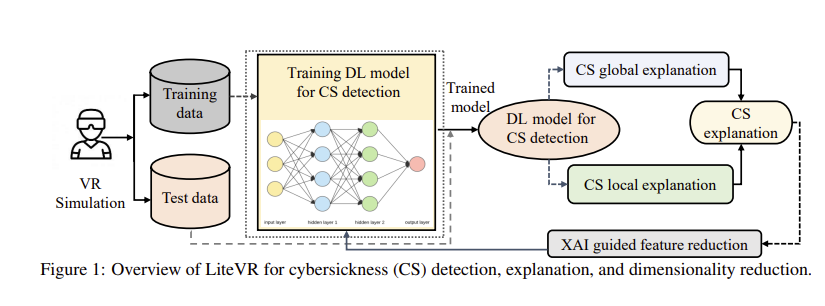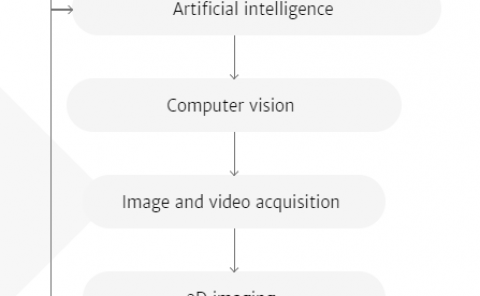LiteVR: Interpretable and Lightweight Cybersickness Detection using Explainable AI
PubDate: Feb 2023
Teams: University of Missouri;Kennesaw State University;University of Texas at San Antonio
Writers: Ripan Kumar Kundu, Rifatul Islam, John Quarles, Khaza Anuarul Hoque
PDF: LiteVR: Interpretable and Lightweight Cybersickness Detection using Explainable AI

Abstract
Cybersickness is a common ailment associated with virtual reality (VR) user experiences. Several automated methods exist based on machine learning (ML) and deep learning (DL) to detect cybersickness. However, most of these cybersickness detection methods are perceived as computationally intensive and black-box methods. Thus, those techniques are neither trustworthy nor practical for deploying on standalone energy-constrained VR head-mounted devices (HMDs). In this work, we present an explainable artificial intelligence (XAI)-based framework, LiteVR, for cybersickness detection, explaining the model’s outcome and reducing the feature dimensions and overall computational costs. First, we develop three cybersickness DL models based on long-term short-term memory (LSTM), gated recurrent unit (GRU), and multilayer perceptron (MLP). Then, we employed a post-hoc explanation, such as SHapley Additive Explanations (SHAP), to explain the results and extract the most dominant features of cybersickness. Finally, we retrain the DL models with the reduced number of features. Our results show that eye-tracking features are the most dominant for cybersickness detection. Furthermore, based on the XAI-based feature ranking and dimensionality reduction, we significantly reduce the model’s size by up to 4.3x, training time by up to 5.6x, and its inference time by up to 3.8x, with higher cybersickness detection accuracy and low regression error (i.e., on Fast Motion Scale (FMS)). Our proposed lite LSTM model obtained an accuracy of 94% in classifying cybersickness and regressing (i.e., FMS 1-10) with a Root Mean Square Error (RMSE) of 0.30, which outperforms the state-of-the-art. Our proposed LiteVR framework can help researchers and practitioners analyze, detect, and deploy their DL-based cybersickness detection models in standalone VR HMDs.

